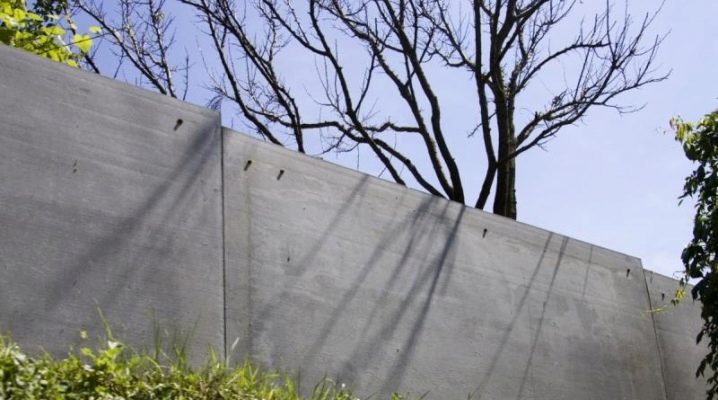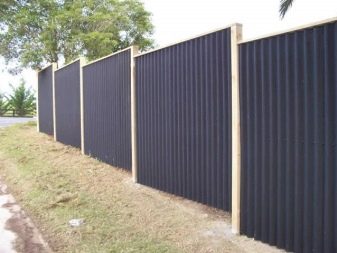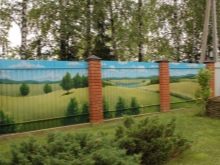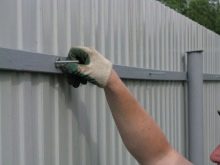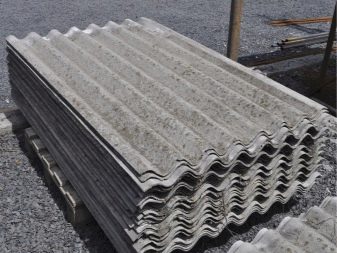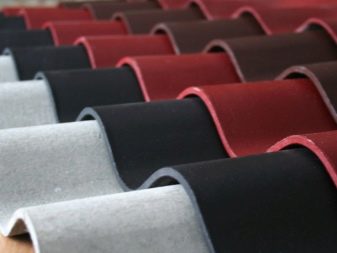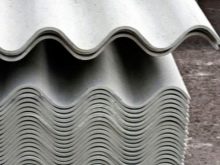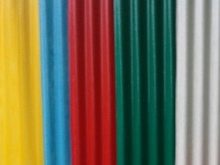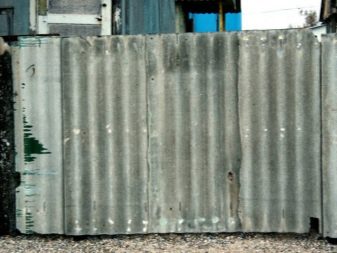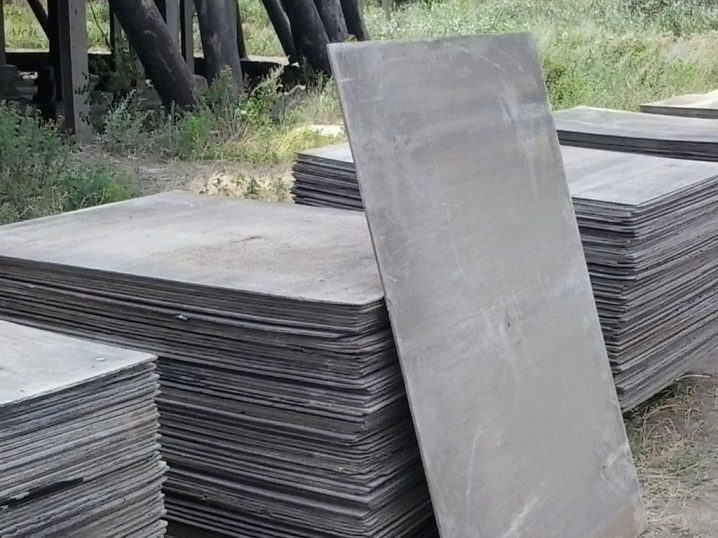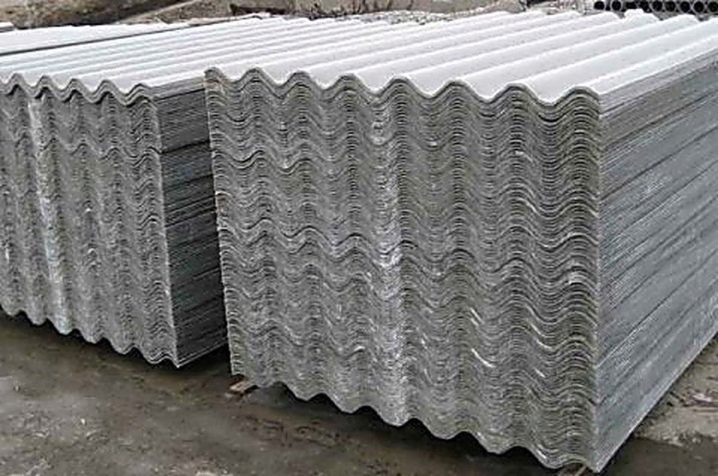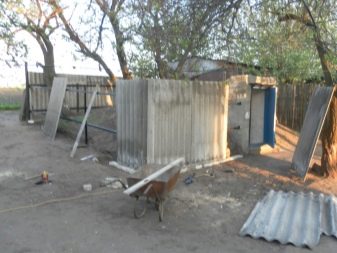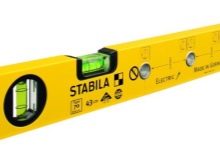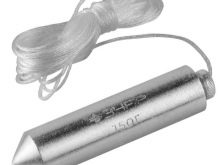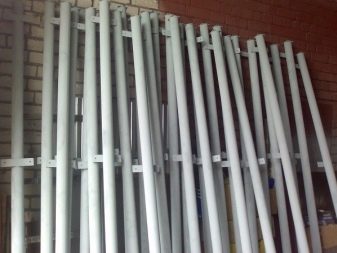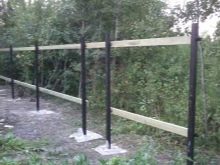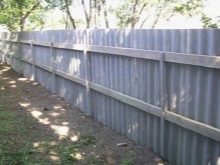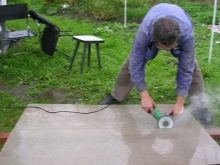How to make a fence of slate?
Slate fences have been very popular for many years. Especially among residents of private houses, since this material is considered to be very popular and durable, and not the most expensive. Each building material has its own advantages and disadvantages, and slate is no exception. In addition, when choosing this material as a fence, you need to know about some of the nuances that you will learn in this article.
Special features
Slate is considered a very popular material that is used for the construction of fences. By itself, the material is simple, inexpensive and does not cause many questions during installation. A fence made entirely of slate will look very neat and will not attract undue attention.
The release of modern slate engaged in many domestic brands. Find and purchase it will have no difficulty.Such material is suitable for creating high-quality fences, even in urban areas.
Slate fence is ideal for delimiting adjacent areas. You can easily install it yourself.
Advantages and disadvantages
If you decide to choose a slate for erecting a fence, then you should definitely know its main advantages and disadvantages:
- Slate is considered very durable and wear-resistant material. According to many experts, asbestos slate can serve up to thirty years.
- This type of material is considered to be completely safe and non-flammable. In addition, it is not toxic.
- Slate is a rather dense material, as a result of which it is very resistant to various kinds of chemical, thermal and other external influences.
- It is ideal for installation even in areas with a harsh climate, because it is not afraid of not only severe precipitation, but also strong wind. In addition, slate is very cold resistant. Even during periods when there are strong winds on the street, slate will not make unpleasant sounds and interfere with household members, unlike, for example, from a noisy sheeting.
- Slate is considered a fairly lightweight material for installation and installation, it is easy to cut and amenable to drilling. Many are engaged in installing a slate fence on their own, without the help of experts.
- In addition, the creation of a slate fence does not take much time and effort.
Slate is affordable for many people, however, it can be a bit more expensive than some materials from which fences are built at dachas or in private properties. Nevertheless, its positive aspects are obvious, and the whole cost will pay off over many years of quality service.
To choose a decent building material, it is worth buying slate only with good characteristics and the top layer, which is covered with a special protective pigment. Besides the fact that with additional coating slate looks more beautiful, this coating protects the material itself from temperature changes.
The minor cons of slate include the following:
- Despite the fact that the fence from slate is not afraid of temperature changes, it is not recommended for installation in regions with excessively high humidity, which can significantly reduce the quality of the material over time.
- Asbestos cement slate canvases are considered very heavy, they should be installed as firmly as possible so that not only the wind cannot shake them, but also so that the fence does not fall under its own weight.
- Some buyers refuse to buy slate to create a fence, because they believe that it is suitable only for installation in rural areas.
Species
If you have already decided that you will build a fence of slate, then you should familiarize yourself with all its varieties.
Most people are familiar with only two types of slate coatings, which include flat and wave, however, this is not all.
Flat slate can be:
- Pressed.
- Unpressed.
Pressed slate is considered to be slightly denser and heavier than unpressed.
According to all characteristics, it is most well suited for the construction of a strong fence that will last for many years and will not collapse from regular temperature drops.
Wave slate sheets can also please the range of varieties. In addition, today more advanced species appear on the market, which are in particularly high demand. Asbestos cement wave slate is considered to be more rigid and more durable than other options.
Wave slate also comes in the following varieties:
- Standard or as it is called ordinary.
- Reinforced.
- Unified.
The main differences are in height and size of the wave.
DIY Fence
In order to properly build a fence, first of all, it is very important to calculate the amount of material you need for construction. The calculation itself is simple, the main thing is to correctly measure the perimeter of the territory (area), except for those places where the gates and the gate will be located, as well as other possible openings.
After the measurements have been made, it is recommended to draw up a drawing where it is necessary to arrange all the supports in the corners and along the lines of the future fence. More detailed calculations should be made upon purchase of material. If you are not sure that you can independently make correct calculations or build a fence, then it is best to use the services of professionals who will surely meet all your expectations.
Instruments
Do not forget to pick up a complete set of tools that will be useful to you during the construction of the fence.
The main ones used in the preparation process include:
- Level.
- Spade (most often bayonet).
- Boer.
- Plumb.
Directly for the construction of the slate fence itself are needed:
- Mixer for concrete.
- Welding machine.
- Drill, Bulgarian.
- Hacksaw.
- Spanners.
This list is approximate and may vary slightly, depending on the type of section and the type of slate used. As for the acquisition of pillars for the fence, it is best to use metal options. They are considered the most reliable and stable. In addition, they will serve you for many years.
It is recommended to install poles every 3-4 meters for erecting a fence.
Operating procedure
Despite the fact that on the Internet there are a lot of instructions and video tutorials on how to make a slate fence yourself, before getting started, you should study a lot of information on this issue:
- Before you install the fence, you must clear the territory in which it will be located.
- It is very important to properly tension the thread along the entire length of the fence, so that the future slate fence is level. Do not forget about the markup, which is important to perform, for example, with pegs.
- In order that the preparatory procedures do not take you much time and at the same time you do not have many questions, focus on the previously prepared drawing, which should be made on paper.
- After you have done the markings with pegs on the plot, you need to start digging holes for the supports.
- Further, it will be necessary to weld the iron transverse strips onto the supports on which the timber should be fixed.
- The trench, which will serve as the basis, between the posts can be lined with a brick.
- In the bars it is necessary to make special holes with a drill. This is done to accommodate fasteners.
- Slate sheets should be installed on a brick base in an upright position. Then the sheets should be fixed to the intake beams.
Slate fences are not always built with a brick base. However, according to many experts, such fences are considered the most durable and wear-resistant.
Expert advice
- When cutting slate, try to protect the respiratory system from the ingress of dust and fibers from the building material.
- As for the finish, many varieties of slate can be painted. However, you can easily find the finished building materials of the desired color.
- It is not recommended to plant the plants very close to the fence, especially when it comes to climbing species.An abundant mass of moisture often accumulates under plants, with the result that your fence may become unusable in a very short time.
How to build a fence from the slate with your own hands, you can learn from the following video
